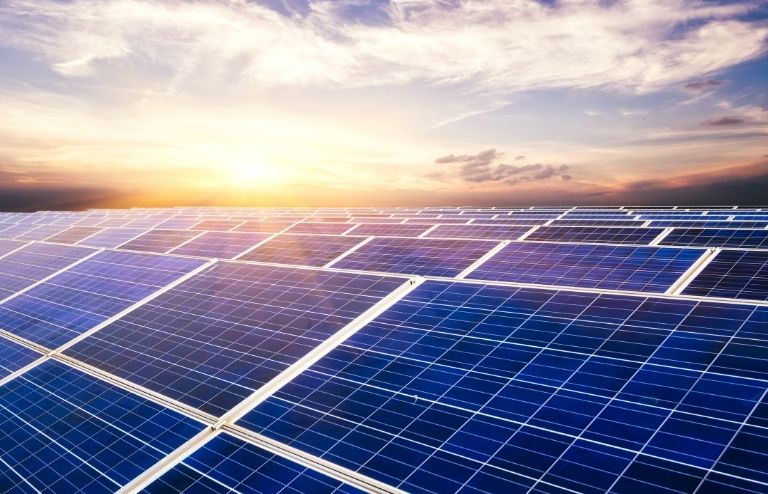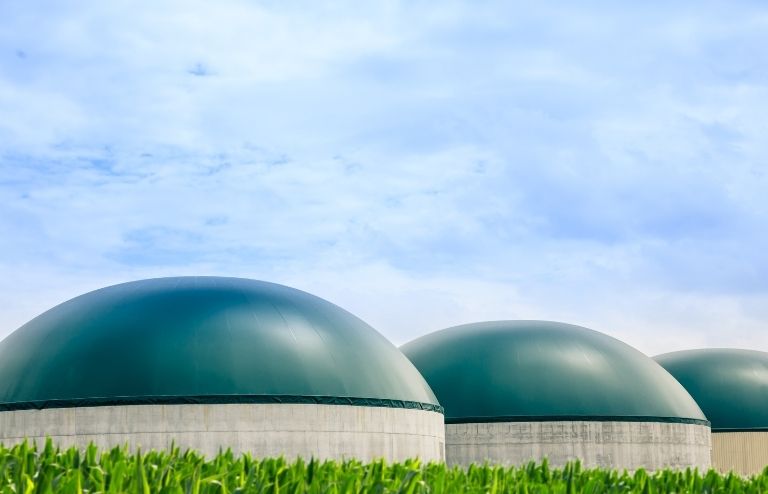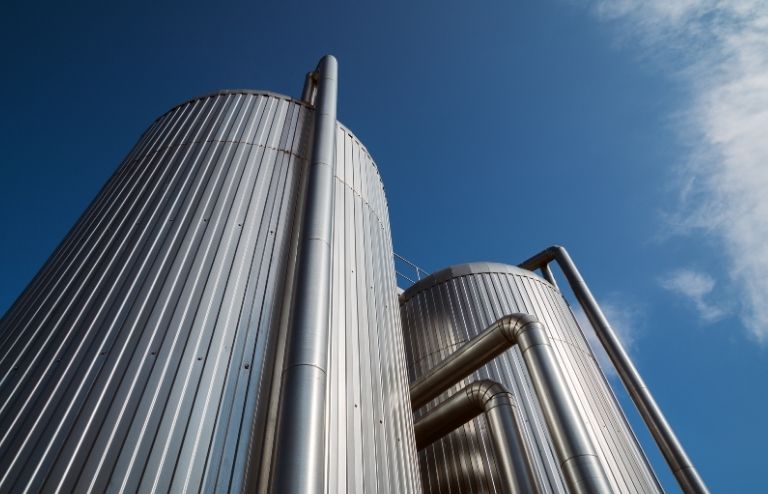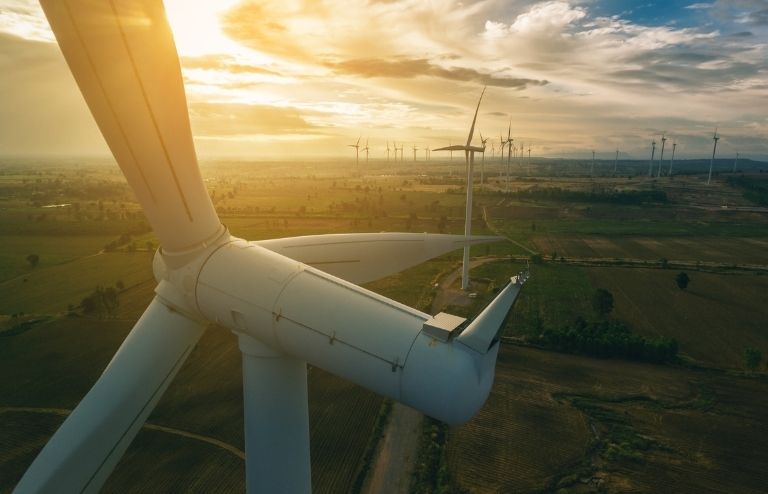Henryk Majchrzak, DSc, PhD, Eng
Opole University of Technology
MCX Group
Interested in energy storage? In this study, the author aims to delve into the topic of energy conservation and draws conclusions regarding the perspectives of using energy storage technologies. Discover the latest methods of energy storage!
Introduction to battery energy storage
The Transmission System Operator (TSO), as part of its obligations under the Energy Law, is obliged to take all reasonable steps to ensure:
- compliance with the conditions for the safe operation of the power system,
- continuity of electricity supply to end-users.
Proper implementation of the above-mentioned tasks requires the TSO to take into account the impact of all significant factors of an increasing share of renewable energy sources in the balance of installed power of the National Power System (NPS), especially on the safety and economic efficiency of the system operation.
From the TSO’s point of view, it is particularly important to analyze the impact of this group of renewable electricity sources, which, due to the type of primary energy resources they use, are not able to directly influence the level of power generated by them.
This group includes, in particular, wind and photovoltaic power plants, the power generated at a given moment, unlike, for example, biomass or biogas power plants, which directly depend on weather conditions. As a result of the work of this group of renewable energy sources, often referred to as unstable RES, the following effects of their work are observed:
- periodic lack of correlation between electricity production and demand on the part of end recipients,
- occurrence of sudden changes in the power generated by these sources as a result of difficult to forecast strong changes in weather conditions, such as, for example, storm fronts, rapid changes in cloud cover,
- the difficulty of accurate long-term forecasting of the operation of unstable RES as part of the power system work planning and development process.

Future of Polish Energy
The data presented in the recently approved Polish Energy Policy until 2040 shows that a faster increase in installed capacity in wind farms in 2030 and 2040 should be expected, of which only installations built at sea will amount to approx. MW and 11 thousand. MW, and in the case of photovoltaic power plants, about 6 thousand. MW in 2030 and 13,000 MW in 2040.
The actual values of the installed capacity in this group of generating units belonging to unstable generation power plants will, however, depend on many factors, including most strongly on the systems of their financial support by the state in the form of subsidies to the energy produced, subsidies, credit preferences etc. mechanisms for promoting renewable energy sources.
Regardless of the conditions affecting the pace of renewable energy development in Poland, many circumstances, including international commitments made by Poland in the field of climate policy implementation, indicate that the share of renewable energy sources in the country’s energy balance will systematically increase in the future.
Development of NPS and RES
The entities responsible for the development of the NPS have many tools at their disposal which, despite the dynamic development of unstable RES, ensure the ability of the TSO to fulfil its tasks in terms of ensuring continuity of electricity supplies to end-users, while maintaining the related costs at a reasonable level.
In the group of effective mechanisms for mitigating the effects of unstable RES operation, using new, prospective technologies, energy storage installations deserve special attention. These technologies are highly reliable and flexible at work with the possibility of simultaneous fulfilment of many other tasks for which the operators managing the operation of the power system are responsible. The most important ones include: voltage and frequency regulation of the system, elimination of network limitations, prevention of limitations of energy supplies to consumers, restoration of normal operation after system failures.
The above-mentioned circumstances mean that energy storage technologies have a realistic prospect of their wider use for the purposes of optimizing the development and operating of the power system (PS). In this area, energy storage should also be taken into account by the TSO as one of the possible technical solutions for the intervention balancing of the peak power of the NPS, i.e. in conditions when the normally functioning electricity market does not provide coverage of the loads required by consumers.
How battery energy storage systems work?
For many years, activities aimed at the development of energy storage technologies have been carried out around the world, seeking solutions that are more efficient in terms of energy and economy.
These activities are dictated by the need for better use of electricity, especially in the context of satisfying the needs of end-users that change in the following hours of the day and days of the month.
The systematics of classifying the types of energy storage can be very diverse, for example, according to the criterion:
- the energy conversion used (fuel, chemical, mechanical, electric),
- the availability of power and energy stored in the battery,
- the type of factor used for energy storage (water, compressed or condensed air, hydrogen).

Important technical parameters distinguishing the available energy storage technologies:
- time of one work cycle including loading and unloading the warehouse,
- efficiency of energy conversion in one work cycle,
- operational loss of accumulated energy,
- the density of energy stored in the warehouse related to e.g. its mass, volume, area occupied,
- maximum number of cylinder operation cycles (installation lifetime),
- unit investment outlays (related to the capacity of the reservoir or accumulated energy in it),
- unit costs of warehouse maintenance and operation (fixed and variable).
Statistical analysis cited by the International Energy Agency (IEA) regarding the size and structure of the installed capacity of large-scale electricity storage facilities connected to power systems around the world indicate that pumped storage power plants dominate these installations, accounting for about 99% of the estimated resources. The rest of the storage facilities are compressed air installations and essentially battery accumulators, built according to various technologies.
Opinion of the experts
From the point of view of the goal of the TSO’s role, the main focus should be on the group of battery energy storage system (bess) facilities that convert the electricity taken from the power system into another form of energy, in order to re-convert it into electricity at the right moment and transfer it to the electric battery storage system.
The necessary condition is that the technical parameters of the operation of these industrial energy storage facilities allow for their possible use by the TSO or DSO for balancing the peak power of the PPS. This applies to both the already used installations and those technologies that, according to the author, have a real potential for their use on a larger scale in the above-mentioned area in the near future (up to 10 years). These technologies include:
- battery storage power plants,
- various types of battery trays,
- compressed air warehouses with different locations of storage tanks,
- liquefied air stores,
- hydrogen storage facilities.
In addition to energy storage technologies, which are within the scope of the statutory tasks and possibilities of TSO influence, there are also those whose possible application may have a significant impact on reducing the level of peak loads of the PS and thus indirectly solve the TSO’s problems in this regard.
This group of solutions includes, among others:
- development of electromobility, which, in addition to using the resources of cheaper electricity in load valleys, can also cooperate with the PS by returning the electricity stored in car batteries during peak load periods,
- wide use by end-users of installations powered by electricity to charge heat storage tanks for heating purposes and for domestic hot water,
- tank installations for storing heat or cold by commercial CHP plants,
- use of electricity storage installations in prosumer RES installations in order to better use the electricity produced in them, including during peak load periods,
- end-users use of devices for the simultaneous production of electricity and heat (e.g. fuel cells, Stirling engines), which are becoming more and more competitive with regard to energy supplies from the PS,
- installations for the production of hydrogen-based electricity.
It is worth noting that an increasing role in energy storage processes will also be played by various heat and cold storage technologies, such as, for example, underground hot water, cold water and ice storage facilities, installations using chemical reactions and changing the state of salt compounds for heat storage.
These installations, also beyond the influence of electricity system operators, should be emphasized, however, that operators should nevertheless be interested in using energy storage technologies for many other equally important purposes for technical and economic reasons, examples of which are mentioned in the introduction.

Energy storage system spectrum of possibility
Energy storage installations, which will be included by operators in the group of possible tools used for balancing the peak power of the PS, may also play other important roles, which will affect the improvement of the economic efficiency of the system.
Possibilities of the future power systems
The many possibilities offered by these technologies to solve the needs of operators managing the operation of the power system include:
- voltage and frequency regulation in order to meet the required operating parameters of power systems and the provision of other regulatory system services,
- optimization of the economic efficiency of electricity supplies to end-users by taking advantage of the differences in supply, demand and prices on energy markets at individual hours of the day and on the following days of the month. This activity, which is beyond the scope of operators’ activity, indirectly facilitates their battery energy storage system operation,
- optimization of maintenance costs of all necessary types of power reserves in the system,
- improvement of the flexibility of the production capacity of the system, allowing to reduce the number of economically ineffective and having a negative impact on the environment, start-ups and shutdowns of conventional generation units during night and weekend load valleys,
- reduction of possible transmission restrictions, the removal of which would otherwise require higher costs,
- optimization of the costs of building new PS components necessary to remove transmission congestion or for the expected further integration of RES with the system and increasing their share in the power and energy balance,
- ensuring safe operation of individual elements of the power system during strong fluctuations in RES generation,
- emergency power supply of selected system elements and ensuring the system’s ability to rebuild it, and restore normal operation and eliminate disruptions resulting from catastrophic events of various possible range.
Taking into account the possibilities of the wide use of battery energy storage indicated above, their selection for the purposes of peak power balancing should also take into account other important tasks that can be performed by these installations for safe and effective operation of the system.
Conditions for the development of Battery Energy Storage System on the energy market
When analyzing the issue of economic efficiency of the operation of battery energy storage on the electricity market in Poland, the following data should be taken into account:
- investment outlays,
- current maintenance and operating costs,
- installation life and energy conversion efficiency.
On this basis, and assuming a certain number of loading and unloading cycles of the warehouses in question performed during the year, as well as assuming certain electricity prices that can be obtained on the market, it is legitimate to conclude that they currently do not guarantee the return of capital invested to investors, measured, for example, by a positive net present value (NPV).
This also applies to a situation where these installations would provide specific system services, such as: participation in primary and secondary regulation, operational power reserve, voltage and reactive power regulation, reconstruction of the power system, according to the rates applicable on the system services market, adequately to technical capabilities of specific warehouses.
The lack of economic efficiency
The main reason for the lack of economic efficiency of the analyzed energy storage facilities operating on the free market is the unfavourable ratio of the excessively high level of their unit investment outlays to electricity prices in particular periods of the day, appropriate for their charging and discharging.
However, observing the dynamic changes taking place on the markets, in particular the observed decrease in the prices of energy storage installations, the increase in their efficiency and lifetime as well as the increasing price differences between the peak and off-peak load periods of the SE, one should expect a change in this area, which will ultimately make modern energy storage installations effective investments.
Other circumstances that may significantly change the above-presented economic calculation and the conclusions resulting therefrom are:
- application of systemic support for energy storage installations (subsidies, preferences),
- use of energy storage to regulate the operating parameters of the power system (voltage, frequency, power balance, reliability of supplies for the recipient) as a cheaper alternative to other solutions,
- use of energy storage to rebuild the system after catastrophic failures,
- avoiding or postponing the construction of specific elements of the power infrastructure (new lines, stations, reactive power compensation systems),
- integration of energy storage with renewable energy sources in order to, for example, avoid generation limitations by these sources or overload the elements of the power system.
The above conclusions refer only to the group of energy storage facilities that convert the electricity taken from the power system into another form of energy in order to, at the right moment, be converted back into electricity and fed back into the system.
In practice, the development of this group of installations will also favour the development of other groups of energy storage, for example, those converting electricity into heat, the optimization of which may have a significant impact on improving the operating conditions of the power system.

Selected conclusions concerning the perspectives of using energy storage technologies
- The dynamic development and commercialization of energy storage technologies make that these installations have a realistic prospect of using them to optimize the development and operation of PS. In this area, energy storage should be considered by system operators as one of the possible solutions for peak power balancing.
- In the group of energy storage facilities that convert electricity into another form of energy in order to re-convert it into electricity and enter it into the system for the purposes of peak power balancing, the real potential of their effective use in the near future has: such as battery accumulators, compressed and liquefied air stores and hydrogen installations.
- The assessment of the possibility of acquiring new energy storage solutions on the market for the purposes of peak power balancing can be made on the basis of the analysis of unit costs of power balancing.
- The results of calculations of unit costs of balancing power with energy storage, carried out for the estimated number of hours of use of the installation in a year, indicate that the total costs of the related system service that can be obtained on the market by operators are lower than the unit costs of energy not delivered to consumers.
- Taking into account the criterion of total costs of the energy storage service, in the group of analyzed solutions, the most competitive technology are installations using compressed air, which are cheaper than the world’s commonly used pumped storage power plants. With the development of this technology, towards adiabatic cycles, increasing the efficiency of installations, their economic efficiency will continue to improve.
- The technology using liquefied air is in a group with similar economic parameters as pumped storage power plants and production installations and hydrogen storage, combined with the use of fuel cells. The competitiveness of hydrogen installations using gas turbines will significantly depend on the related investment outlays.
- Battery accumulators have the potential for their wider use to balance peak power. Their currently limited role is determined by high unit investment outlays, although the dynamic development of new, cheaper and more effective technologies on the market will result in a breakthrough in this area. This is confirmed by the increasing use of battery accumulators for various purposes related to maintaining the required operating parameters of the power system.
- In the process of making decisions by operators about choosing the best solution from among the available energy storage installations, in addition to the economic criterion, other important factors should also be taken into account, such as:
- environmental conditions,
- the operational reliability of the installation,
- specific technical requirements of the system cooperating with the warehouse,
- development prospects electricity market.
- For a wider use of battery energy storage in the NPS, justified by many technical reasons, and in particular by the rapid development of uncontrollable renewable energy sources, it is necessary to comprehensively and coherently regulate issues related to the financing, construction and operation of energy storage.
MCX is a partner of MIT EF CEE Spring 2021 acceleration program. Want to work with them – explore what MCX is looking for.




